Content is created by CNN Underscored’s team of editors who work independently from the CNN newsroom. When you buy through links on our site, CNN and its syndication partners may earn a commission. Learn more
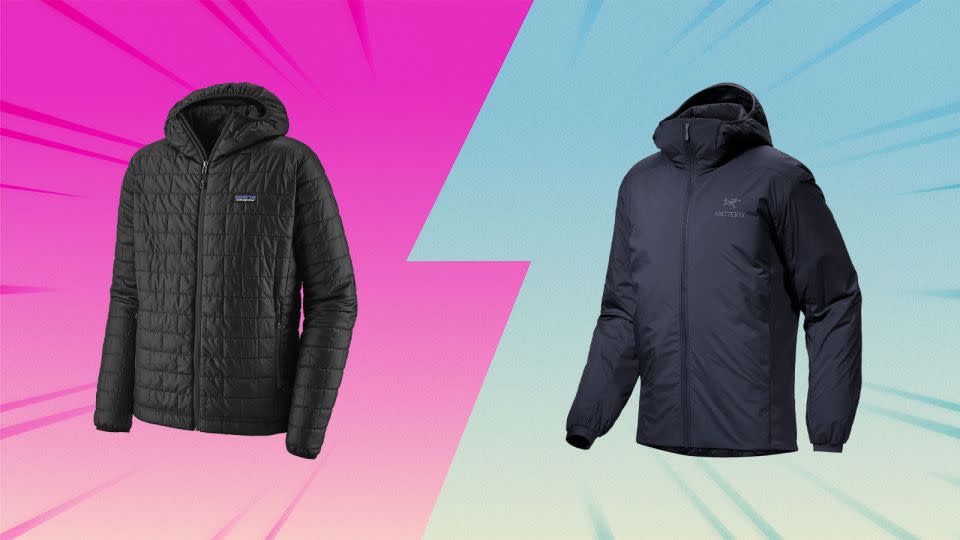
James Harris/CNN Underscored
This article is part of our series Battle of the Brands, in which we compare category-leading products to their counterparts to determine which are actually worth your money.
In the pantheon of outdoor apparel, few brands can compete with Patagonia and Arc’teryx. Their clothes are expensive, and yes, they’re overhyped by gorpcore trendies and Bay Area techies. But they’re also the brands you can trust on a backpacking trip year after year … after year. Both brands have uber-popular jackets, Patagonia’s Nano Puff Hoodie and Arc’teryx’s Atom Hoodie, but is one that much better than the other? To find out, I got my hands on both and tested them out.
I’ll come out and say it now: I loved both of these lightweight, synthetic insulated jackets. Despite feeling near-weightless, they kept me warm in chilly, 50-degree weather. But in the Battle of the Brands, there can only be one winner, so I tested the jackets in as many settings as I could — on nighttime walks, a hike in the Santa Monica Mountains, a backyard camping trip and at the club — to find out which lightweight hoodie reigns supreme.
Patagonia Nano Puff Hoodie vs. Arc’teryx Atom Hoodie at a glance
Patagonia Nano Puff Hoodie
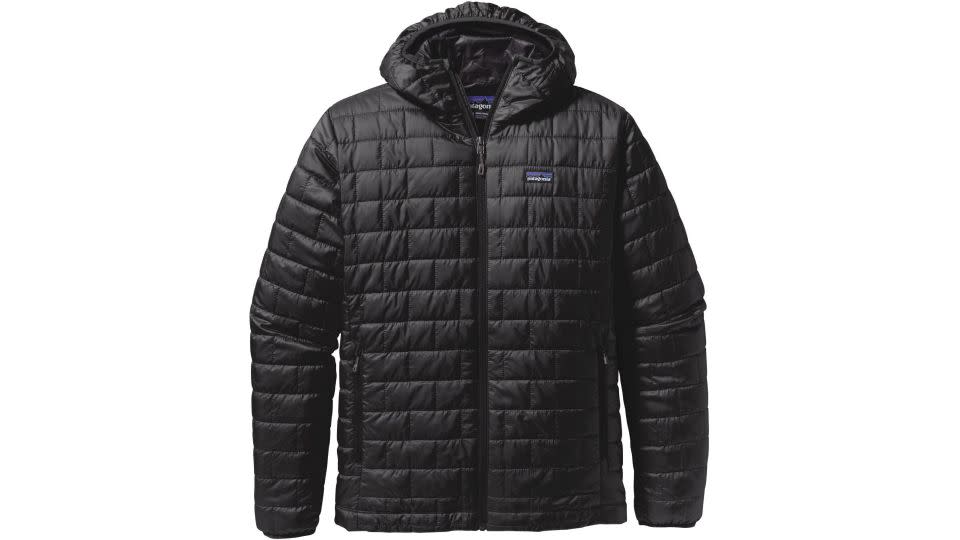

Warm, lightweight and water-resistant, this synthetic insulated jacket will keep you warm as a standalone jacket in fall, spring and summer or as an insulated mid-layer. All in all, it’s a great piece, though its performance in fit, breathability and waterproofness hold it back from perfection.
Arc’teryx Atom Hoodie
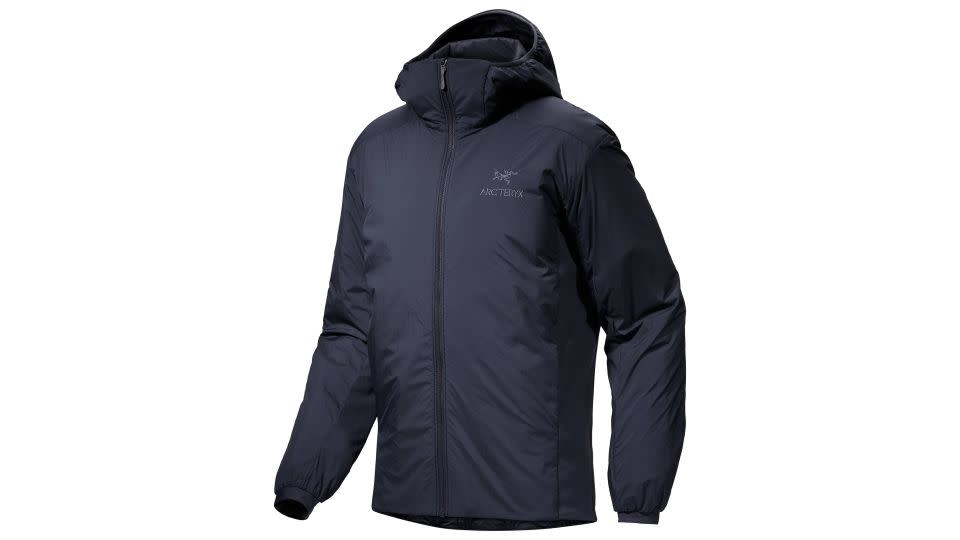

Arc’teryx
Arc’teryx’s sleek Atom Hoodie is tailored in all the right places, making the synthetic insulated jacket a stylish and functional piece suited for outdoor recreation and everyday wear. We were particularly impressed with its waterproofness, though its bulky hood leaves something to be desired.
From $180 at REI
Quick specs comparison
Warmth and weight
The warmth-to-weight ratio on these jackets is wild, with the Patagonia weighing 363 grams and the Arc’teryx weighing 370 grams. To put those numbers into perspective, a 12-ounce can of Coke weighs around 350 grams, while Patagonia’s uninsulated rain jacket, the Torrentshell, weighs a tiny bit more at 400 grams.
As light and as thin as they are, the Nano Puff and Atom kept me warm in chilly weather. On morning and evening walks in Los Angeles, where it got down to the mid-50s, I was plenty warm in just a T-shirt and one of these jackets. It was only when temps dropped to the high 40s while (backyard) camping in Napa that my T-shirt and jacket wouldn’t cut it.
In practice, that means these pieces make excellent stand-alone jackets for fall, spring and summer outdoor activities, though they’re likely too thin for winter. Unless, that is, you wear them as a mid-layer, in between a moisture-wicking base and a windproof shell. Otherwise, you’ll want a bigger jacket with more insulation for the coldest months.
Gearheads will want to know how these jackets keep you warm, and while both use vegan synthetic insulation, the technology is technically different. Patagonia is rocking PrimaLoft Gold Insulation, a patented synthetic microfiber insulation (read: plastic) developed for the US Army. However, in typical Patagonia fashion, their PrimaLoft is produced from 100% post-consumer recycled polyester.
Arc’teryx is similarly sustainable, insulating its jacket with the brand’s proprietary Coreloft polyester, which is 100% recycled and Bluesign-approved. Since both have the same insulation weight, 60 grams per square meter, the two jackets should be similarly toasty. And, in general, they were, though I’d give a slight edge to the Nano Puff, which felt a smidge warmer, perhaps because of its boxed baffling.
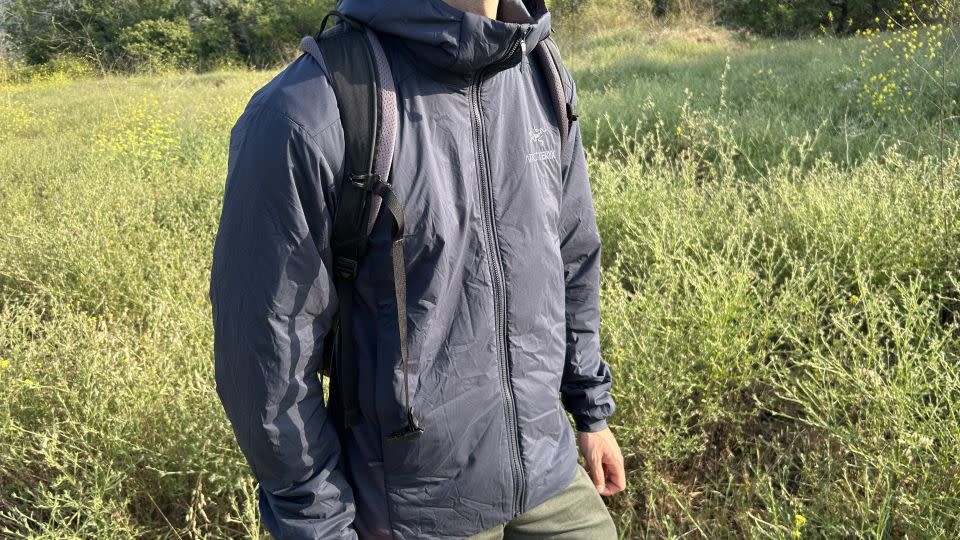

Arc’teryx Atom Hoodie in Black Saphire – Maxwell Shukuya/CNN Underscored
Weatherproofing and breathability
Neither jacket will keep you dry in an intense rain storm, but if I had to choose one jacket to wear in the wet, it’d be the Arc’teryx Atom Hoodie. As you can see in our looped video, water instantly beaded and bounced off of the Atom, thanks to its fluorocarbon-free DWR exterior. Again, that wouldn’t last in a serious rainstorm, but if it were drizzly or misty, I’d stay pretty dry.
Patagonia’s jacket did well too, but its PFC- and PFAS-free DWR fabric wasn’t as water-repellent. Yes, most of the water beaded and splashed off, but a considerable amount also pooled on the sleeve.
I’d also give Arc’teryx the crown when it comes to breathability. While hiking through the hills in LA, Patagonia’s Nano Puff Hoodie felt more like a sauna, trapping my heat and sweat when I got overheated. While it’s technically heavier and tighter on the body, Arc’teryx’s jacket felt weightless, airy and breathable, even when I got too warm.
Fit, design and style
Whether you prefer the Nano Puff or the Atom’s fit will come down to personal preference, but I’m a bigger fan of the latter’s style. The problem with the Nano Puff was that neither its medium nor its large fit me well. The medium was far too tight in the shoulders, so much so that I couldn’t wear it. Meanwhile, the large felt a little too baggy, boxy and long. (For context, I’m 5-foot-10 and have an athletic build.)
I only tried the Arc’teryx in medium, but it didn’t matter because it fit perfectly. The Atom was slim on my torso (but not too slim) and the arms were just the right length, making it perfect for layering. In a word, it was sleek. The only caveat is that Arc’teryx revised the Atom’s fit in 2023. The medium size is unchanged, while smaller sizes got tighter and larger sizes got looser. Based on the reviews online, this ticked off a few Atom loyalists, so keep that in mind if you’re replacing an older model.
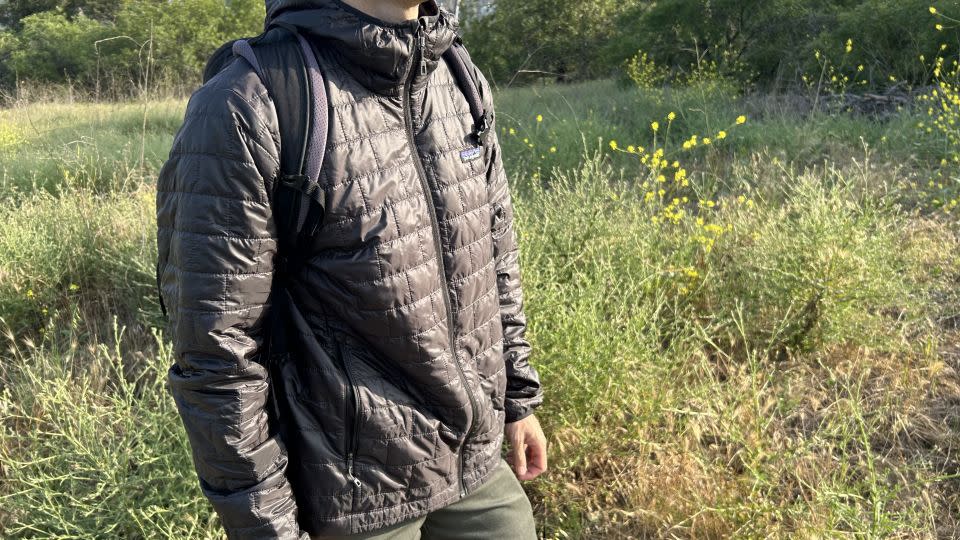

Patagonia Nano Puff Hoodie in Black – Maxwell Shukuya/CNN Underscored
As far as design goes, Patagonia wins on account of its hood. Sure, it’s goofy — it looks like a medieval coif — but it fits nicely under a helmet, whether you’re rock climbing, mountaineering or cycling. On the other hand, Arc’teryx’s hood looks more stylish (i.e., normal), and it includes a useful little wire to shape the brim. But when I tried to put a helmet over it, there was too much bulk for it to fit comfortably. And when I tried to put a helmet underneath the hood, it wouldn’t fit.
I won’t declare a definitive winner here. Personally, I’m fine wearing a helmet and foregoing the hood, so I prefer Arc’teryx’s design. But if you’re a die-hard climber who needs the hood while projecting in the cold — or you simply have different taste — you might prefer the Nano Puff.
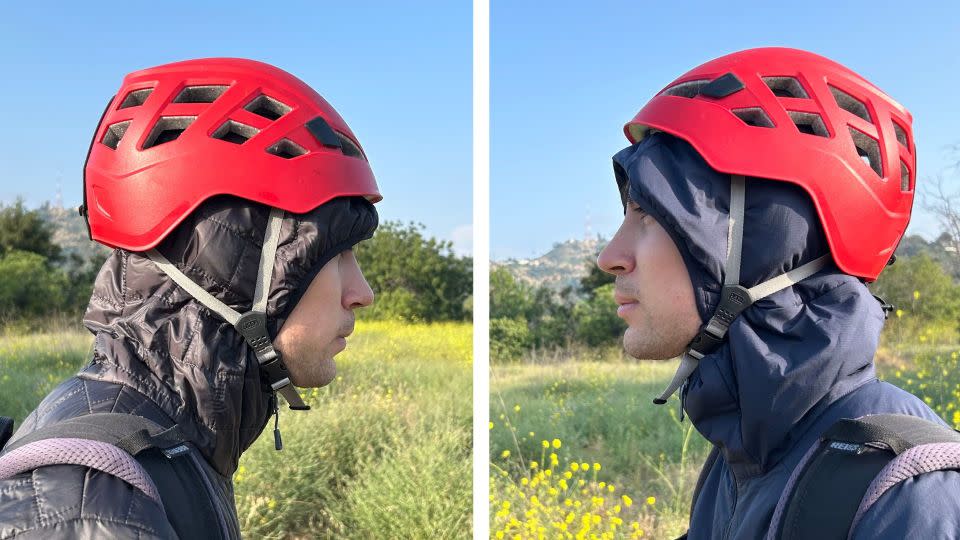

Left: Patagonia Nano Puff Hoodie. Right: Arc’teryx Atom Hoodie. – Maxwell Shukuya/CNN Underscored
Warranty and customer service
Patagonia’s Ironclad Guarantee reads, “If you are not satisfied with one of our products at the time you receive it, or if one of our products does not perform to your satisfaction, return it to the store you bought it from or to Patagonia for a repair, replacement or refund. Damage due to wear and tear will be repaired at a reasonable charge.”
In practice, that means you can wear a Nano Puff Hoodie for five years, and if the zipper breaks, Patagonia will fix it for you. In other words, it’s a jacket for life (or close to it). That’s a legendary policy, especially since I’ve read and heard dozens of reports on and offline that Patagonia honors this guarantee.
That said, Arc’teryx’s policy is pretty good too, covering replacement and repair “for the practical product lifespan.” As you might imagine, customer service essentially decides what a piece’s “practical product lifespan” is, leaving the company a lot of leeway. Even so, I’ve also heard that Arc’teryx can be generous with its policy, especially when you show up to a store in person (Emily Pennington, an Underscored contributor, got the zipper on her Atom replaced for free).
Chances are you won’t need to use either guarantee for a decade or so because both jackets are designed to be buy-it-for-life pieces.


Patagonia Nano Puff Hoodie in black – Maxwell Shukuya/CNN Underscored
Price
I’m adding a short note about pricing to acknowledge that $300 is a lot to spend on a jacket. Do I think it’s too expensive? Yes. Do I think these prices have been inflated by hype? Also yes. And yet, I don’t think it’s so outlandish to spend around $300 on either of these pieces, simply because they will last you for years, if not a decade. Still, if you can’t justify or afford the cost, you’ve got other options, like Cotopaxi’s Teca Calido Hooded Insulated Jacket (from $75). REI Co-op also sells its own affordable lightweight down jacket ($129) that has received a lot of praise. Whatever you decide, factor in both Arc’teryx and Patagonia’s killer warranties, because a $300 jacket that lasts you 12 years will be cheaper (and more sustainable) than a $50 one that falls apart in a season.
Bottom line
Arc’teryx’s Atom Hoodie isn’t necessarily the better jacket, but it is the best jacket for me. It’s stylish, warm and breathable, and feels so lightweight that I forget I’m wearing it. In fact, since I started testing it, it’s become the jacket I wear the most — to the grocery store, to the climbing gym and on short sunset hikes. Does that mean Patagonia’s Nano Puff is objectively worse? Not at all. Maybe Patagonia products fit you better and you want a hood that fits under your climbing helmet. Or, perhaps you appreciate the company’s commitment to sustainability. To put it simply, you can’t go wrong with either jacket. After all, we’re comparing two titans of the outdoor industry here, and both brands live up to their lofty names.
Note: The prices above reflect the retailers’ listed price at the time of publication.
For more CNN news and newsletters create an account at CNN.com



